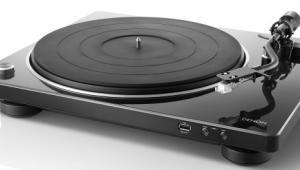Turn it Up! Spotify Lowers Streaming Volume

Back in the good old days when almost all music was delivered on LP vinyl, the overall level of music was physically limited by a variety of factors: album length, bass response, and dynamic range. When CD came along, some of those limits were removed, and we entered the digital domain with its own set of limitations. Music kept getting louder and louder. Radio stations knew that if their songs were louder, people would tune in. And, human perception is that louder is better. So began the Loudness Wars.
To get music to appear louder, mixing and mastering engineers would compress the dynamic range of their songs, so what should have been softer passages would be louder. Engineers who mixed commercials for TV (yours truly) had been doing this for years — that’s why the commercials always seemed louder than the TV shows. The TV industry has since standardized this, and many streaming services self-regulated themselves. Now, finally, Spotify has joined in.
Spotify is now using the same LUFS as other streaming services. What is an LUFS? Basically, it’s a perceived loudness scale; Loudness Units referenced to digital Full Scale. It’s similar to decibels, but takes into account how the human ear reacts to different frequencies. In the past, songs were mixed to be as loud as possible, with as little dynamics as possible, but by putting these limits, dynamics are back.
The sound quality of tracks through Spotify should be audibly better; less dynamically compressed with a greater dynamic range. Apple Sound Check and Pandora have even lower levels; their levels comply with recommendations from the Audio Engineering Society, which say Target Loudness of the stream should not exceed –16 LUFS to avoid excessive peak limiting and allow a higher dynamic range in a program stream. At the lower end of the spectrum, the AES also recommends “that the Target Loudness of a stream not be lower than –20 LUFS to improve the audibility of streams on mobile devices.” Hopefully, the others will all eventually work their way down to those recommended levels.
The changes won’t be noticed on tracks whose mixes were optimized for loudness — once a track is overly compressed, it is hard to accurately expand it. However, moving forward, engineers can once again allow tracks to breathe, with appropriately loud and soft passages, without fearing their song will sound “bad” compared to other songs.
Thank you, Spotify, for officially and finally ending the Loudness Wars.






























































